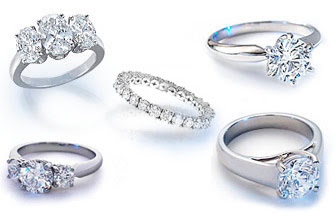Diamonds can be sold with or without certificates authenticating their 4Cs. Diamonds without certificates should cost less than their certified counterparts. For example, one popular jewelry retailer sells a round, one-carat solitaire diamond in a 14-karat white gold ring for $3,100. The same jeweler sells a ring with the same description, plus the word “certified” for $4,800. Both diamonds are I-color, I1-clarity, one-carat, round. So, they may be exactly the same diamonds, except one is certified. There are many sources of certifications, from world-known gemological institutes to jewelry store in-house gemologists. Diamonds certified by well-known laboratories such as GIA and AGS carry a premium, so they will naturally cost a little more than diamonds certified elsewhere. If you are certain the diamond’s qualities are being accurately represented, you can always send the diamond for certification after its purchase, usually for much less than the price difference between certified...

